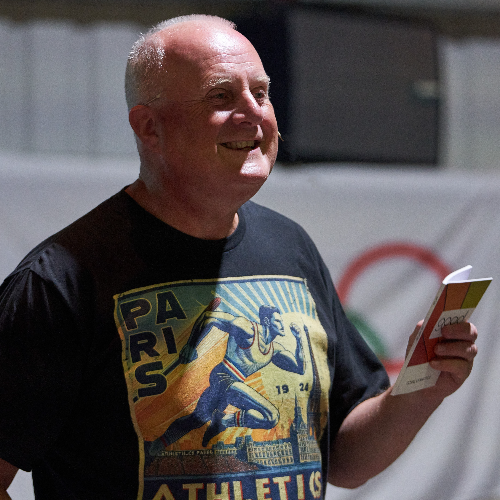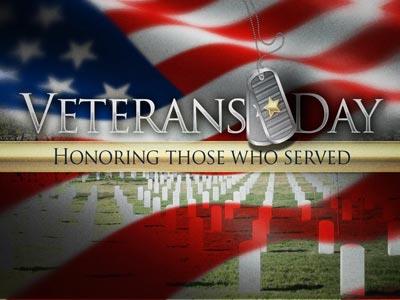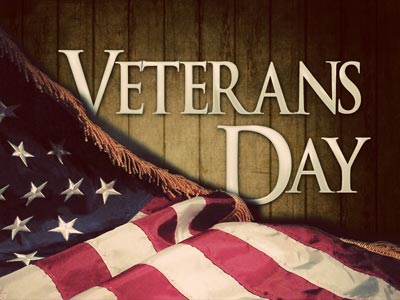-
Memorial Day, A Time For Healing PRO
Contributed by Sermon Central on May 19, 2002 (message contributor)
MEMORIAL DAY, A TIME FOR HEALING
Memorial Day, perhaps more than any other holiday, was born of human necessity. Deep inside all of us lies a fundamental desire to make sense of life and our place in it and the world. What we have been given, what we will do with it and what we will pass to the next generation is all part of an unfolding history, a continuum that links one soul to another.
Abraham Lincoln pondered these thoughts in the late fall of 1863. His darkest fear was that he might well be the last president of the United States, a nation embroiled in the self-destruction of what he described as "a great civil war..testing whether that nation, or any nation so conceived and so dedicated can long endure." He began his remarks with those words as he stood on the battlefield near Gettysburg, Pennsylvania on November 19th of that year.
The minute’s speech that became known as Lincoln’s Gettysburg Address turned into what might be called the first observance of Memorial Day. Lincoln’s purpose that day was to dedicate a portion of the battlefield as a cemetery for the thousands of men, both living and dead, who consecrated that soil in the sacrifice of battle. Said Abraham Lincoln: "That from these honored dead we take increased devotion to that cause which they gave the last full measure of devotion...that this nation, under God, shall have a new birth of freedom..."
The next year, a pleasant Sunday in October of 1864 found a teenage girl, Emma Hunter, gathering flowers in a Boalsburg, Pennsylvania cemetery to place on the grave of her father. He was a surgeon who had died in service to the Union Army in that great Civil War. Nearby, Mrs. Elizabeth Meyer was strewing flowers upon the grave of her son Amos, a private who had fallen on the last day of the battle of Gettysburg. Emma respectfully took a few of her flowers and put them on the grave of Amos. Mrs. Meyer, in turn, laid some of her freshly cut blooms on the grave of Dr. Hunter. Both women felt a lightening of their burdens by this act of honoring each other’s loss, and agreed to meet again the next year. This time they agreed they would also visit the graves of those who had no one left to honor them.
Both Emma Hunter and Elizabeth Meyer returned to the cemetery in Boalsburg on the day they had agreed, Independence Day, July 4, 1865. This time, though, they found themselves joined by nearly all the residents of the town. Dr. George Hall, a clergyman, offered a sermon, and the community joined in decorating every grave in the cemetery with flowers and flags. The custom became an annual event at Boalsburg, and it wasn’t long before neighboring communities established their own "Decoration Day" each spring.
About that same time in 1865, a druggist in Waterloo, New York, Henry C. Welles, began promoting the idea of decorating the graves of Civil War veterans. He gained the support of the Seneca County Clerk, General John B. Murray, and they formed a committee to make wreaths, crosses and bouquets for each veteran’s grave. On May 5, 1866, war veterans marching to martial music led processions to each of three cemeteries, where the graves were decorated and speeches were made by General Murray and local clergymen. The village itself was also decorated with flags at half-mast, evergreen boughs and mourning black streamers.
Also, as the Civil War was coming to a close in the spring of 1865, Women’s Auxiliaries of the North and South moved from providing relief to the families and soldiers on their own sides to joining in efforts to preserve and decorate the graves of both sides. A woman of French extraction and leader of the Virginia women’s movement, Cassandra Oliver Moncure, took responsibility of coordinating the activities of several groups into a combined ceremony on May 30. It is said that she picked that day because it corresponded to the Day of Ashes in France, a solemn day that commemorates the return of the remains of...
Continue reading this sermon illustration (Free with PRO)Related Sermon Illustrations
-
A. Dr. Karl Menninger, A World-Famous ... PRO
Contributed by Davon Huss on Oct 15, 2002
A. Dr. Karl Menninger, a world-famous psychiatrist, was answering questions after giving a lecture on mental health when one person asked, “What would you advice someone to do if he felt a nervous breakdown coming on?” Most people expected the doctor to say, “Consult a psychiatrist.” Instead he ...read more
-
"Theology In The Pew" PRO
Contributed by Ronald Keller on Oct 15, 2002
“THEOLOGY IN THE PEW” “A large share of people who attend Protestant or Catholic churches have adopted beliefs that conflict with the teachings of the Bible and their church, according to the latest release from the Barna Research Group (www.barna.org). There are some fundamental Christian ...read more
-
Erich Remarque's Book, All Quiet On The Western ... PRO
Contributed by Eric Peloquin on Jun 23, 2005
Erich Remarque’s book, All Quiet on the Western Front tells of a remarkable encounter between two enemy soldiers during the Second World War. During the confusion of an infantry attack a soldier plunged into an out of the way shell hole. There he found a wounded enemy. The sight of the man moved ...read more
-
One Day Out Of The Blue An Old Friend Of Mine ( I ...
Contributed by Jeff Leigh on Jul 23, 2005
One day out of the blue an old friend of mine ( I will call him Keith) phoned me to say he was in town and wanted to catch up. We hadn’t seen each other for over 15 years - I wasn’t a Christian when we were friends. Him and I were hell raisers, we were into anything and everything not good. Anyway ...read more
-
D. Dave Thomas, Founder Of Wendy's Hamburgers, ... PRO
Contributed by Davon Huss on Oct 15, 2002
D. Dave Thomas, Founder of Wendy’s Hamburgers, “I got my MBA long before my GED. I even have a photograph of me in my MBA graduation outfit; a snazzy kneelength work apron. I guarantee you that I’m the only founder among America’s big companies whose picture in the corporate annual report shows ...read more
Related Sermons
-
Freedom Child Series
Contributed by Jeff Strite on Apr 19, 2015
Why would God send Moses as a baby? He's supposed to be a "deliverer"... and it's going to take 80 years to grow into the job! Why did God do it that way?
-
More Than A Prophet Series
Contributed by Gordon Curley on Nov 21, 2010
Jesus/Moses - More Than A Prophet
-
The Gospel Of God Series
Contributed by Steve Shepherd on Oct 24, 2013
Several different looks at this “good news” gospel. 1- It’s the gospel of the apostles 2- It’s the gospel of the prophets 3- It’s the gospel of the Son
-
How God Restores Series
Contributed by Brian Bill on Feb 22, 2009
Life is filled with bad news and good news. Joel and Zephaniah offer us both.
-
A Prophetic Body Builder Series
Contributed by Jeff Strite on Sep 6, 2015
Some scholars call the gifts in Rom 12 "motivational" gifts. What do they mean by that and how does that help us understand the value and purpose of the gift of prophecy?

 Sermon Central
Sermon Central






